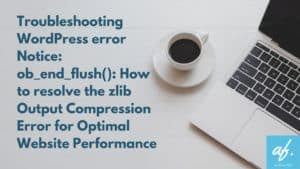In the digital age, a well-optimized website is crucial for engaging users and improving search engine rankings. However, a bloated WordPress website can lead to large backup file sizes, causing storage and performance issues. Fear not! This article will explore ten proven ways to optimize your WordPress website, ensuring that your backup sizes remain under control while enhancing overall performance.
- Compress and Optimize Images: Carefully compress and optimize images to reduce file sizes without compromising quality. Be cautious not to over-compress, as it may result in a loss of visual appeal. Additionally, resize images to match the dimensions required by your theme to minimize their impact.
- Minify CSS and JavaScript: Exercise caution when minifying CSS and JavaScript files, as some complex themes or plugins may rely on specific code structures. Test your website thoroughly after minification to ensure there are no functionality issues.
- Enable GZIP Compression: While GZIP compression significantly reduces file sizes, ensure that your hosting provider and visitors’ browsers support it. Check compatibility to avoid potential conflicts and ensure seamless compression.
- Use a Caching Plugin: Although caching plugins offer significant performance improvements, they may conflict with certain themes or plugins. Test your website thoroughly after enabling caching to ensure proper functionality across all pages.
- Limit Post Revisions: Be mindful when limiting post revisions, as it may affect your ability to revert to previous versions. Consider the specific needs of your website and choose an appropriate revision limit to balance backup size reduction and revision availability.
- Clean up the Database: Exercise caution when cleaning up the database to avoid accidentally deleting essential data. Before using plugins like WP-Optimize or WP-Sweep, back up your database to ensure you can restore it if necessary.
- Optimize Database Tables: While optimizing database tables is generally safe, ensure a backup before performing any optimization procedures. In rare cases, optimization can lead to data loss or corruption.
- Remove Unused Themes and Plugins: Before removing unused themes and plugins, double-check if other active components require any. Carefully assess the impact of their removal on your website’s functionality.
- Limit External Scripts and Embeds: Be mindful of the number and type of external scripts and embeds you use, as they can introduce vulnerabilities or affect page load times. Regularly review and update the scripts and embeds used on your website.
- Choose a Lightweight Theme: When selecting a lightweight theme, ensure it meets your website’s requirements. Thoroughly test the theme’s compatibility with essential plugins and confirm its ongoing support and updates.
Conclusion: While optimizing your WordPress website is essential, it’s crucial to be mindful of potential risks. Carefully handle image compression, minification of CSS and JavaScript, and enabling GZIP compression to ensure optimal results without compromising functionality. Exercise caution when limiting post revisions, cleaning up the database, and removing unused themes and plugins to avoid unintended consequences. By understanding and mitigating these risks, you can successfully optimize your website, reduce backup sizes, and improve overall performance while maintaining a secure and efficient WordPress environment.
Note: Let me know in the comment if you want me to dive dip on any of the points I have mentioned here!



